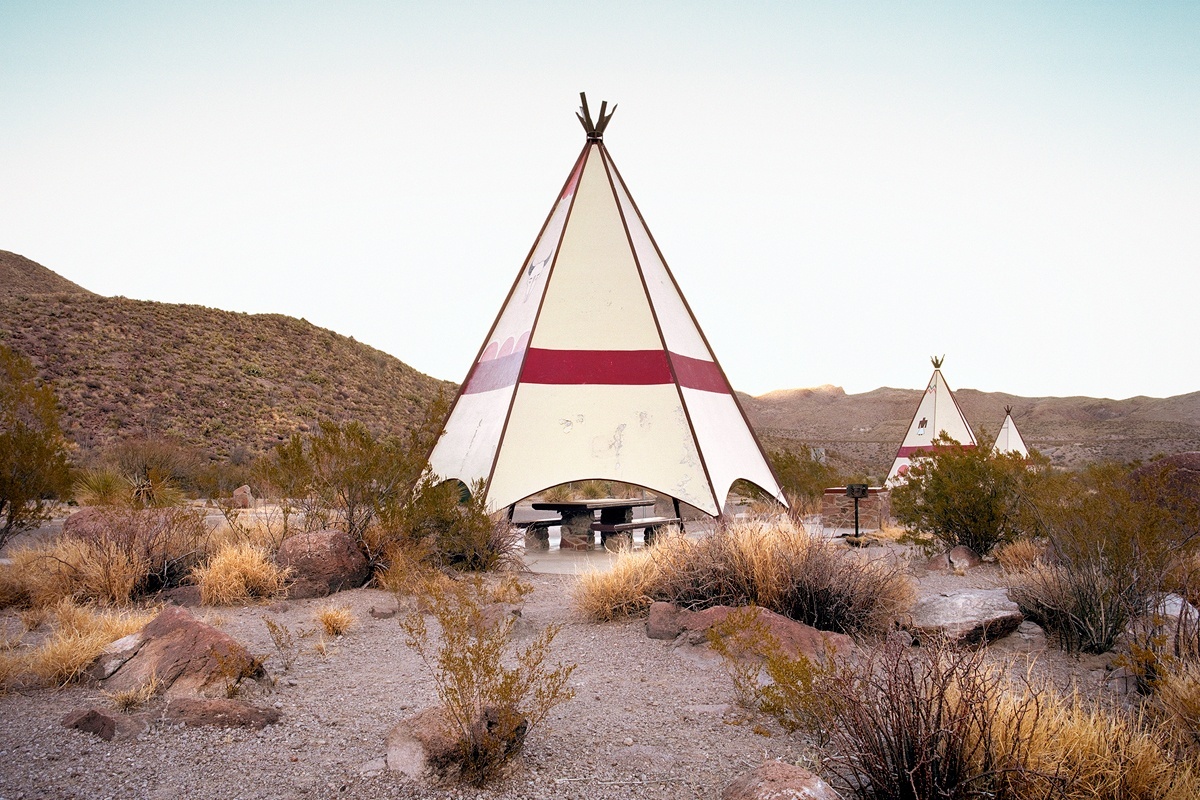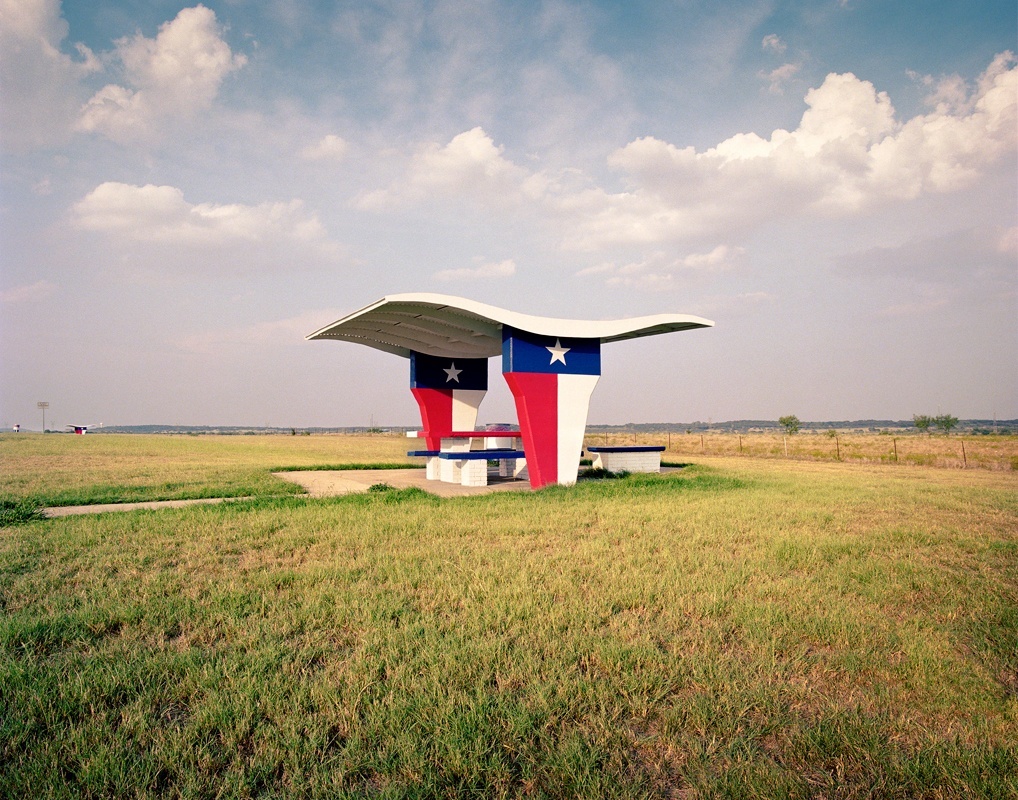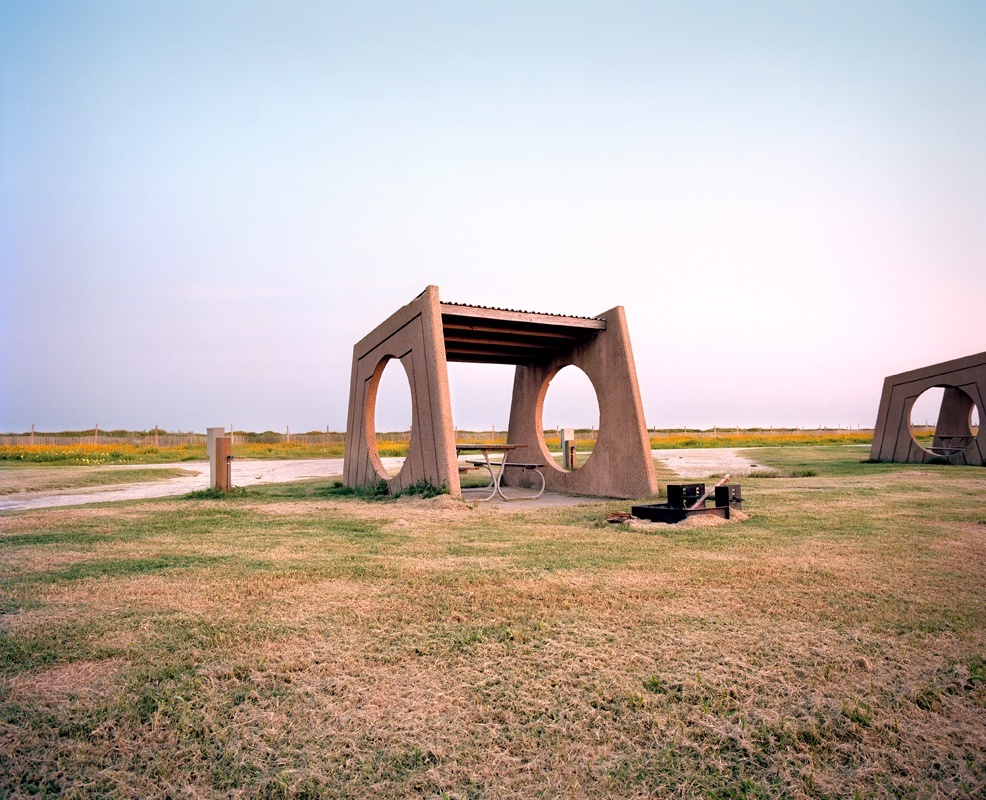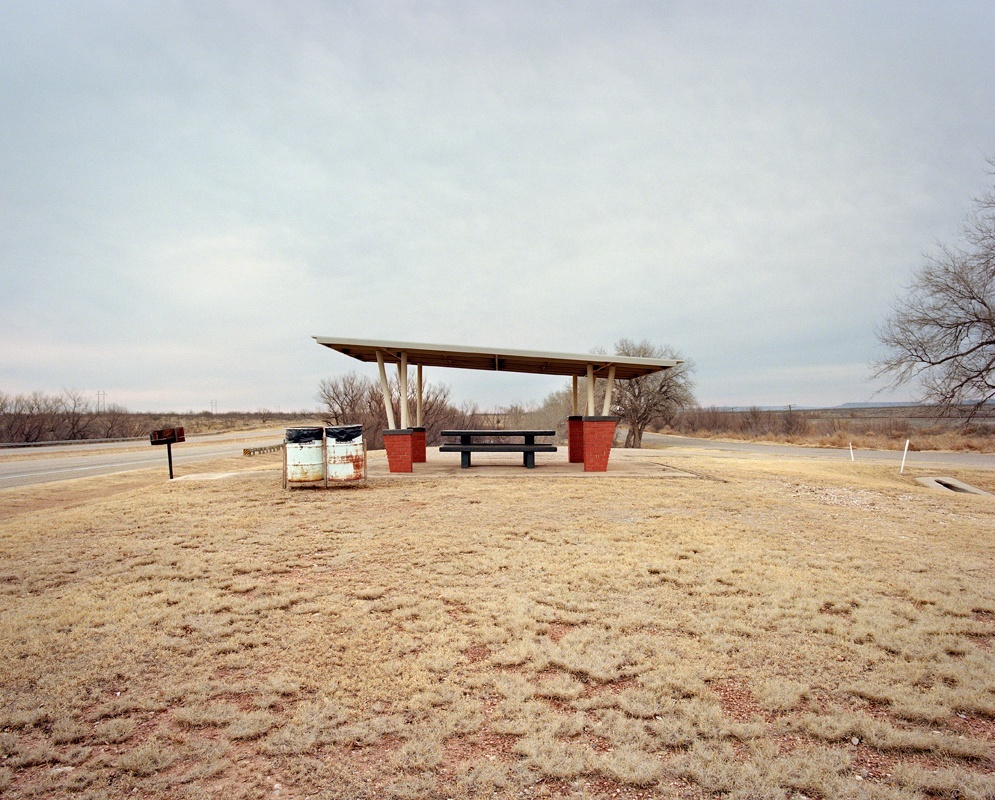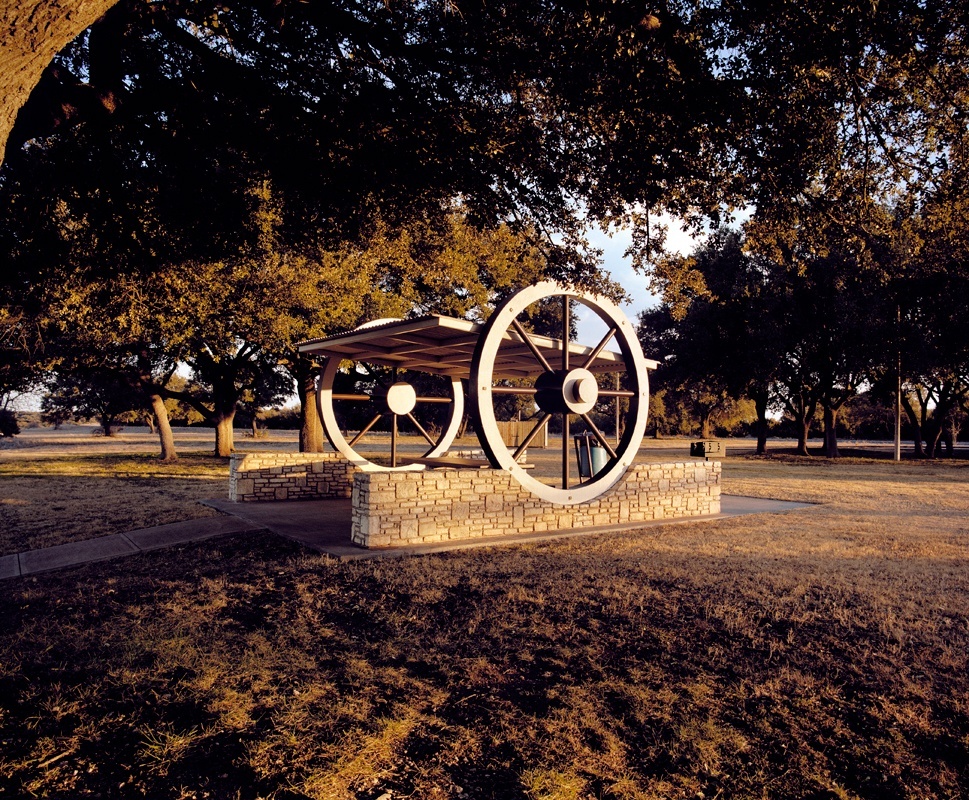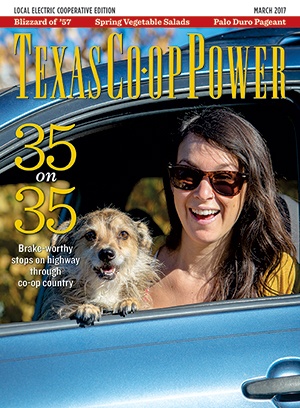I made the move from Southern California to Texas in summer 2007. Not long after I got settled, photography assignments started taking me all over the state. On the way to shoots, I usually took the interstates, but on the way home, after the stress retreated, I drove the back roads for a change of scenery.
Soon I started noticing rest stops. I wish I could remember the exact one that did it for me, but I think it happened subconsciously after seeing a few of them. I glimpsed one and thought, “That would be a great photo.” I was drawn to the minimalist scene—a modest structure set on a beautiful landscape—and the midcentury architecture.
I remember getting home from an assignment one day, sitting down at my computer to start retouching, and being distracted by the thought of photographing the vintage rest stops I had just seen.
Procrastinating on my retouching work, I Googled to see whether anyone already had photographed rest stops and also to see what other stops looked like. Instead, I was met with news article after news article detailing the demise of rest stops all over the country. That was during the worst of the recession, and states were cutting expenses wherever they could. Highway rest stops were high on the list of budget cuts. Some were just closed temporarily, but others were demolished. I scrolled to an article about Texas, clicked the link and saw a photo of a rest stop whose roofline took the shape of longhorns. A huge Texas flag was painted down the walls of the structure. It was an amazing example of Americana. To my horror, the article detailed how the rest stop was “a breeding ground for crime” and was slated for demolition. I was in disbelief.
That next weekend I jumped in the car and made the four-hour drive to Flower Mound, near Fort Worth. The rest stop was even more kitschy in person. I got a great shot and headed home. A few weeks later I was back in the area on assignment and, sure enough, it was gone. A big orange barricade blocked the entrance ramp, the concrete structures had been knocked down and hauled away, and the ground where they stood was smoothed over as if they had never existed. I immediately felt an urgency to shoot as many rest stops as I could before they all were gone forever.
It’s pretty tough to find a friend willing to take a week off work to drive around looking for rest stops, and my mom was worried about me going alone. So I asked her if she would tag along, and she agreed. I spent a few days mapping out a rough itinerary for us, the first trip taking us through West Texas.
In the beginning we used a paper map, looked for the picnic table icons and navigated to the spots. But sometimes, after driving hours and hundreds of miles to an icon, we arrived at the location to find nothing there. Probably it was demolished. After a few of those, we wised up and used Google Earth to scout locations from above.
Those of you who have spent time on the road know it can be a magical place. There is something about road trips that makes them ripe for spontaneous events and adventures. We were faced with surprises—a herd of wild javelinas running through a shot—and inevitabilities, like sheltering from a sudden summer thunderstorm and nearly running out of gas. My favorite rest stops were the abandoned ones, and I had to beg my mom to jump the fences with me. She was terrified the entire time that we would be arrested.
A couple of years into the project and 50 rest stops or so later, things really began to take shape. By then I had realized that rest stops were more than just toilets and tables, and that this was more than just a photo series. I had been holding the images close to my heart and became excited to start getting them out there. I posted about 20 of my favorites on my website. Within months, I started getting inquiries. In May 2013, I got an email from The New York Times Magazine, which wanted to run a feature on the rest stops. I was ecstatic.
I began getting emails from people all over the country who wanted to share their stories and memories of their times at rest stops. I never imagined that these funny little rest stops I was drawn to would evoke so much interest from the American public. I am forever grateful that this project came into my life and for the opportunities that have come from it. My hope is that my work cultivates an interest in the often-overlooked beauty and significance of rest stops in the American travel experience and maybe even encourages preservation of those that remain.
——————–
Photographer Ryann Ford specializes in architecture, interiors and travel. The Last Stop was published by Powerhouse Books in 2016.
